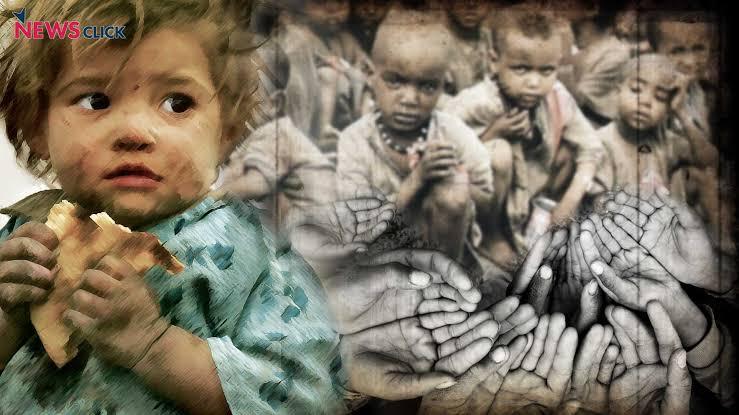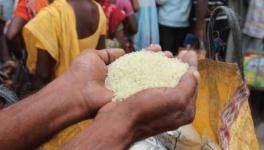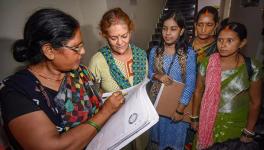Disquiet on the Hunger Front

As a child, I never liked eating liver. I would gaze at my plate for ages, as I sat ruminating at the table, well after everyone else had finished their meals. “You are wasting your food,” my mother would scold me, “while children in Ethiopia are dying of hunger.” I am not alone. Almost all of us would have heard of this fable of hungry Ethiopian children.
Forty years later, the tables appear to have turned. Today, Ethiopia ranks above us in the Global Hunger Index. That’s mainly because Ethiopian children get better nutrition than children in our country. It’s not just Ethiopia, but several other poor African nations, such as Nigeria, Tanzania, Mozambique, Angola, Guinea-Bissau and Niger, all rank above us. And, so do our neighbours, Pakistan and Bangladesh.
The overall ranking, however, hides something alarming. To understand that, we need to unpack how the hunger index is calculated. It uses four broad measures, three out of which are directly related to nutrition levels. The first is the percentage of people in any country, who are ‘undernourished’, that is they do not get sufficient number of calories.
The second is the percentage of children under five, who have low body weight compared with their height. This is called ‘wastage’ and is seen as a sign of acute undernutrition, or not getting enough to eat in the immediate past.
The third indicator used is the percentage of children under five, who have low height for their age. This is called ‘stunting’, which is a sign of chronic, or prolonged malnutrition.
When it comes to the overall proportion of undernourished people, India scores better than several countries that rank above it in the Global Hunger Index 2019. The percentage of undernourished in India’s population is 14.5%, marginally better than Bangladesh’s 14.7%, and well above Pakistan’s 20.3%, Ethiopia’s 20.6% and Rwanda’s 14.5%. In other words, India has a smaller proportion of hungry people than these four countries that rank above it in the overall Hunger Index.
Even when it comes to chronic hunger among small children, as indicated by the prevalence of stunting in children under five years old, India’ performance is no worse than the other four countries. In India, 37.9% of small children have low height for their age. The same indicator for Bangladesh is 36.2%, Pakistan is 37.4%, Ethiopia is 38.4% and Rwanda is 37.6%. Broadly, four in every 10 children in each of these countries is ‘stunted’, which means they haven’t got proper nutrition for several years.
The picture changes when it comes to ‘wasting’, which indicates that a child has not got enough nutrition or food in the recent past. In Rwanda, the prevalence of wasting amongst children under five, is just 2.1%. In Ethiopia it is 7.1%, Pakistan 10%, Bangladesh 14.4%. In India, it is a whopping 20.8%, the highest for any country that reports these numbers.
One in every five Indian children has faced acute undernutrition between 2014-18, the period covered by the latest Hunger Index. The comparable data for 2008-12, shows that the prevalence of wasting was 16.5%, or about one in every six children. This suggests that acute hunger has become a bigger problem in the past five years, than it was 10 years ago.
Compare this to the undernourishment data for the population as a whole. As mentioned above, 14.5% of Indians didn’t get enough calories between 2014-18. That percentage was 17.5% between 2008-12. This suggests that older children and adults are possibly getting better nutrition now than small children.
This is an alarming piece of data, because it seems to suggest that able-bodied working poor are forced to feed young children less, to be able to feed themselves enough to go back to work the next day. This also flies in the face of conventional wisdom, that parents go hungry to feed their children. In times of extreme poverty, this might simply not be feasible. After all, working adults, whether they are paid for their work or do unpaid labour at home, need to consume some basic quantum of calories to reproduce their labour power, or their ability to work the next day.
This is as good a sign of increasing immiserisation, as any other. Especially, when it is seen together with other data, such as growing rural unemployment, lower rural wages, low real-income growth in agriculture, during the entire Narendra Modi-ruled period.
What is shameful is that this data comes at a time when Food Corporation of India’s granaries are overflowing. Reports say, a committee of secretaries has already recommended that the excess foodgrain be exported to ‘deserving’ countries as humanitarian aid, and now the Food Ministry has also written to the Ministry of External Affairs with the same request.
Apparently, the market price of foodgrain is so low that FCI will not recover its costs if it sells it. Any welfare-oriented government would have enhanced the public distribution system and given away the excess stock to the hungry poor. But that would go against the neoliberal tenets that the Modi government follows when it comes to economic policymaking.
So, India’s children go hungry while India’s corporates get mega tax-breaks.
Aunindyo Chakravarty was Senior Managing Editor of NDTV India & NDTV Profit. He runs the YouTube channel Desi Democracy & anchors a weekly show Economy ka Hisab Kitab on Newsclick. The views are personal.
Get the latest reports & analysis with people's perspective on Protests, movements & deep analytical videos, discussions of the current affairs in your Telegram app. Subscribe to NewsClick's Telegram channel & get Real-Time updates on stories, as they get published on our website.
























